Centers and Facilities
With our interdisciplinary research, we have technical spaces throughout the Vancouver Campus’ engineering and health science district, as well as at UBC facilities at Vancouver General Hospital.
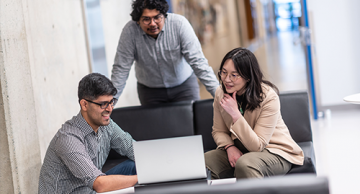
Many of our research facilities are in the Civil Engineering and Mechanical Engineering (CEME) building and the adjacent CEME Laboratories building (Rusty Hut), which is home to our wind tunnels.
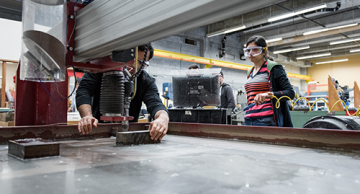
In addition to research labs, the Fred Kaiser building is also home to our machine and electronics shops. Here, our technical staff provide support services for research and maintain student-accessible self-serve equipment.
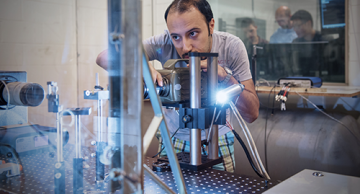
We have research spaces in interdisciplinary centers throughout UBC, notably the Institute for Computing, Information, and Cognitive Systems (ICICS), Clean Energy Research Centre (CERC), and Pulp and Paper Centre (PPC).
The UBC Aerolab specializes in low speed wind tunnel testing for academic and commercial purposes. Our facilities house two subsonic wind tunnels, the Boundary Layer Wind Tunnel, and the smaller Parkinson Wind Tunnel.
Aerodynamics research at UBC was initiated in the early 1950’s by Professor Geoffrey Parkinson. The absence of a dedicated fluid mechanics research facility at UBC led Professor Parkinson to design and construct the Green Wind Tunnel in the mid 1950s, now named the Parkinson Wind Tunnel in his honour. In 1972, the Boundary Layer Wind Tunnel was constructed adding the capability to test larger models. Both facilities are still in use today and offer a full range of testing capabilities.
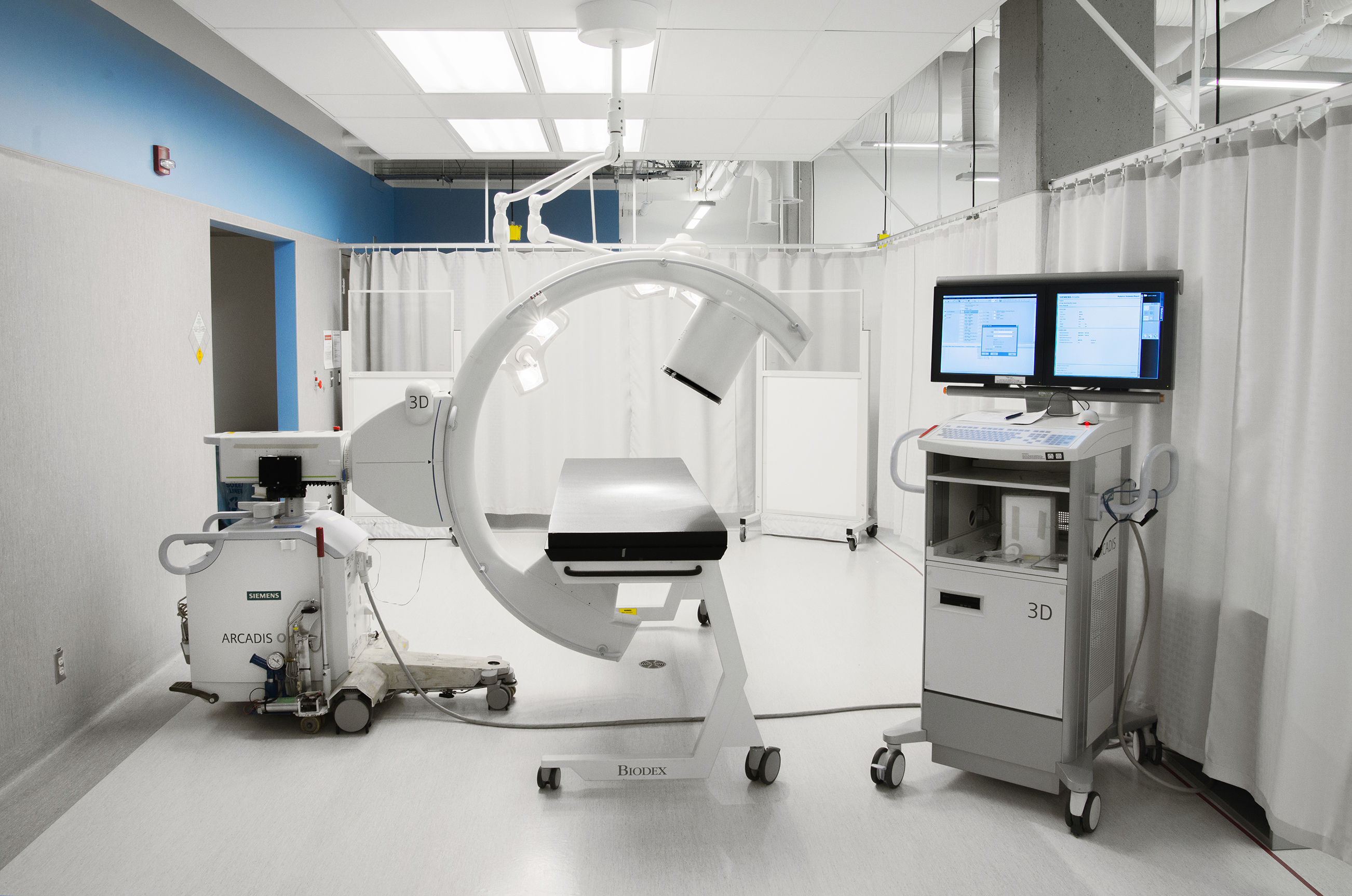 The Centre for Hip Health and Mobility is home to state-of-the-art facilities, equipment and cutting-edge technologies that form a research environment with a focus on innovation. Our research strengths include bone and joint imaging for the early detection of osteoporosis and osteoarthritis; interventions that enhance bone health, cognitive function and mobility and prevent falls and fracture; bone and joint biomechanics and biomaterials engineering; population health and epidemiology, health economics, innovations to reduce infection and the overall burden of orthopaedic surgeries and molecular and cellular physiology of bone, muscle, and tendon.
The Centre for Hip Health and Mobility is home to state-of-the-art facilities, equipment and cutting-edge technologies that form a research environment with a focus on innovation. Our research strengths include bone and joint imaging for the early detection of osteoporosis and osteoarthritis; interventions that enhance bone health, cognitive function and mobility and prevent falls and fracture; bone and joint biomechanics and biomaterials engineering; population health and epidemiology, health economics, innovations to reduce infection and the overall burden of orthopaedic surgeries and molecular and cellular physiology of bone, muscle, and tendon.
The Centre for Hip Health and Mobility houses the world’s only Upright Open MRI dedicated for research use. The Upright Open MRI is an important advance from traditional MRIs as it allows bones, joints and cartilage to be imaged during weight bearing—information that is critical to better understand joint function. The Upright Open MRI complements the other scanners in the Vancouver MRI Research Hub.
CHHM is also home to a Biomedical Engineering Laboratory that is fully equipped with state-of-the-art biomedical engineering and imaging equipment, this lab also contains a Surgical Solutions Suite to advance surgical techniques related to hip fracture, joint protection/restoration, and joint replacement surgery. The dedicated Machine Shop is used to build, customize and modify systems that simulate real life injury, the separate clean room is used for implant design and the Anatomy Prep lab with walk-in freezer is used to prepare and store of ex vivo samples or specimens.
UBC Mechanical Engineering faculty with ongoing work at CHHM include Drs. Antony Hodgson, Peter Cripton, Shahram Amiri, and David Wilson.
http://www.hiphealth.ca/
Contact: info@hiphealth.ca | (604) 675-2575
The Clean Energy Research Centre (CERC) is a multi-disciplinary research centre in the Faculty of Applied Science at UBC that promotes and explores sustainable energy technologies. The research in CERC focuses on the reduction of greenhouse gas emissions to alleviate global climate change, and also on increasing efficiency and decreasing harmful emissions of conventional energy conversion processes and technologies. There are currently 20 faculty members in CERC, mainly from mechanical engineering, chemical and biological engineering, and metals and materials engineering, and nearly 100 graduate students. The centre provides state-of-the-art research facilities to participating faculty and researchers, including some equipment and facilities that are unique in Canada.
The high speed machining facility is part of Manufacturing Automation Laboratory (CEME1050). The facility has a high speed, Mori Seiki HS-403 CNC Machining Center and Cincinnati Falcon High Torque Turning Center. The laboratory is equipped with shrink fit and CoroGrip tooling, dynamometers, and impact and shaker excited modal analysis instruments. The facility is used to identify the properties of material during cutting, the chatter stability of milling, drilling, boring and turning operations, as well as experimental verification of Virtually Planned and Optimized machining of parts.
http://mal.mech.ubc.ca/
Contact: Dr. Yusuf Altintas
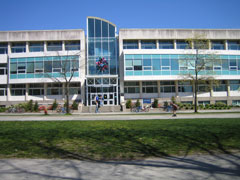 The Institute for Computing, Information, and Cognitive Systems (ICICS) is a research institute at UBC that focuses on human-centered information technology. There are over 160 faculty members in ICICS from a wide range of fields, mainly computer science, electrical, computer and mechanical engineering, and over 800 graduate students. The 25 research groups are active in one or more of the ICICS research theme areas, which include:
The Institute for Computing, Information, and Cognitive Systems (ICICS) is a research institute at UBC that focuses on human-centered information technology. There are over 160 faculty members in ICICS from a wide range of fields, mainly computer science, electrical, computer and mechanical engineering, and over 800 graduate students. The 25 research groups are active in one or more of the ICICS research theme areas, which include:
- computer systems and communications
- computational intelligence
- controls, robotics and CAD/CAM
- integrated system design/software engineering
- mathematical aspects of computations and applications
- multimedia, graphics and human computer interaction
- VLSI design and microelectronics
ICICS receives more than $9 million each year in government and industry funding. The institute is administered by Director Dr. Robert Rohling, who reports to a management committee comprised of the Deans of Applied Science, Graduate Studies and Science.
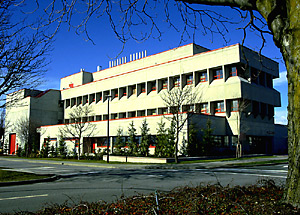 The Pulp and Paper Centre is home to several collaborative post-graduate programs between UBC and the Pulp and Paper Research Institute of Canada (Paprican). The main focus of these programs is on research and education in the pulp and paper industry. Paprican sponsors national education program that involves UBC, McGill University, and Ecole Polytechnique and links their research programs to industry. The departments involved in the Pulp and Paper Centre include Chemical and Biological Engineering, Civil Engineering, Electrical and Computer Engineering, Mechanical Engineering, Metals and Materials Engineering, and Chemistry, and the research has a strong focus on engineering. The research areas of emphasis are:
The Pulp and Paper Centre is home to several collaborative post-graduate programs between UBC and the Pulp and Paper Research Institute of Canada (Paprican). The main focus of these programs is on research and education in the pulp and paper industry. Paprican sponsors national education program that involves UBC, McGill University, and Ecole Polytechnique and links their research programs to industry. The departments involved in the Pulp and Paper Centre include Chemical and Biological Engineering, Civil Engineering, Electrical and Computer Engineering, Mechanical Engineering, Metals and Materials Engineering, and Chemistry, and the research has a strong focus on engineering. The research areas of emphasis are:
- Environmental engineering
- Chemical pulping technology
- Process control
- Fibre processing
- Mechanical pulping
- Papermaking
- Corrosion engineering
The recovery boiler is the largest single piece of capital investment in a pulp mill. Problems which affect its throughput and its emissions include the mixing inside of the furnace of the black liquor fuel and air. Typical flow patterns can be studied (within certain modelling limitations) using water as a working fluid. For these purposes, two reduced scale water flow models of recovery boilers have been built and located in the Pulp and Paper Centre at U.B.C. Flow visualization of the fluid motion and measurements of the actual liquid velocities are possible with various arrangements of jet inlet velocity and size. Velocity measurements are made with a two component laser Doppler velocimeter for velocity and specialized lighting arrangements are used for flow visualization.
Our Research Labs
As principal investigators, our faculty members lead their research groups towards new discoveries, training graduate students and mentoring early career researchers.
The Advanced Manufacturing Processes Laboratory (AMP) focuses on improving existing and developing new manufacturing processes, in order to fabricate precision components with high-quality surface finish, geometric accuracy, and high process efficiency. This research is applied in aerospace, optics, bio-medicine, and electronics industries. We conduct both theoretical and experimental investigations to understand the fundamental process mechanism, and apply the results to enhance manufacturing performance.
The mission of the Advanced Numerical Simulation Laboratory at the University of British Columbia is to improve computational techniques for the solution of partial differential equations, with a particular interest in application to transonic aerodynamics, where improved methodology for flow solution continues to bring higher-fidelity simulation into the engineering design loop. More specifically, members of the group work in three primary areas: high-order accuracy methods on unstructured meshes; unstructured mesh generation and refinement, especially reducing the required amount of human input; and the interaction between mesh quality and solution accuracy.
The Algorithms, Optimization, and Control Lab (AOCL) at UBC conducts research at the intersection of control, optimization, and computing. We apply control, optimization, game-theory and machine learning to solve problems in energy, manufacturing, robotics, and aerospace. Applications also include in large-scale infrastructure (e.g., energy, buildings, transport, logistics), autonomous vehicles, multi-agent robotics, and 3D printing.
The Applied Fluid Mechanics Laboratory (AFM) focuses on the application of fluid mechanics principles to solve important industrial and biological problems. This research spans areas such as industrial sprays for rail applications, pulp and paper topics such as the mechanics of tissue creping, building ventilation through air filtration and energy recovery ventilators, and biological processes relating to chewing and swallowing.
The CAD/CAM/CAI Research Laboratory is developing revolutionary geometric computing software technologies to support practical computer-aided design, manufacturing, and inspection applications. In recent years, our research work consistently involves highly flexible and efficient geometric modeling, machining simulation and verification, and 3D laser scanning and scanned point cloud data processing. To date, we have developed many advanced geometric modeling and computing algorithms. Many of these algorithms are fundamental to the emerging digital manufacturing technologies, which are being viewed as the next wave of manufacturing innovation.
Part of the Clean Energy Research Centre, the Engine Research Laboratory investigates ways to reduce greenhouse gas emissions in combustion engines, and the development of alternative fuels for transportation.
The lab's major facilities available are a Ricardo Hydra single cylinder research engine, a Detroit Diesel 6V-92TA turbocharged diesel engine, a Detroit Diesel 1-71 diesel engine, and a CFR variable compression ratio engine. The Ricardo Hydra engine can be run either as a spark-ignition engine or as a direct-injection diesel engine and may also be motored by the DC dynamometer/motor unit for measurements of gas velocities in the combustion chamber. A computerised data acquisition system records both engine performance data as well as measurements of cylinder pressure and data from a hot-wire anemometer in the combustion chamber. An emissions-measurement trolley for measuring exhaust emissions from each of the engines is in the laboratory. Fundamental studies of engine combustion are also conducted in a separate combustion laboratory which contains several combustion bombs and a rapid intake and compression machine. Research is concerned with the effects of combustion chamber turbulence on the combustion process. A Laser Doppler Anemometer is available for measurement of turbulence parameters in combustion facilities.
Contact:
Dr. Patrick Kirchen
The Industrial Automation Laboratory works on the design, development and application of advanced technologies for Mechatronics and Industrial Automation, with emphasis on robotics, automated design, machine vision, intelligent control, machine health monitoring, and instrumentation including sensing and actuation.
http://ial.mech.ubc.ca/
Contact: Dr. Clarence W. de Silva
The Manufacturing Automation Laboratory (MAL) conducts research in the mechanics and dynamics of metal cutting operations, spindle design and analysis, micro-machining, virtual simulation of machining operations and CNC machine tools; design and digital control of high speed feed drives; precision machining, sensor assisted intelligent machining; and chatter stability of cutting processes. Their academic articles receive the highest citation in the world in the field of manufacturing.
http://mal.mech.ubc.ca/
Contact: Dr. Yusuf Altintas
The Neuromotor Control Laboratory opened in January 1998 to study human motor control strategies and to develop interactive robots in the context of surgical and healthcare problems. We are located in the Centre for Integrated Computing Systems Research at UBC to exploit connections to the other robotics and related computational labs nearby, but we also have strong connections with surgeons at Vancouver Hospital.
Our primary goals are:
- to understand the processes involved in human movement. Possible benefits of such knowledge are improved diagnosis and treatment of neuromuscular disorders and more natural planning of robotic manipulation tasks.
- to apply knowledge of human motor performance abilities to the design and ergonomic assessment of surgical equipment, particularly robotic and teleoperated devices.
- to improve & assess alignment accuracy and precision in total knee replacement surgery in hopes of improving lifespan of implanted prostheses.
Our lab has an area of about 90 m2, which is used for experimental setups, lab meetings, and graduate student desks. We also have access to wet lab facilities in the Anatomy department on the main UBC campus and the Orthopaedic Engineering Research Laboratory at Vancouver Hospital. We are equipped with a number of personal computers, two optoelectronic localizers for precision measurements of tools and human limb segments, a custom-built interactive robot for motor control studies, and a variety of motion control equipment and associated I/O electronics for developing other robotic devices.
Contact: Dr. Antony Hodgson
The Orthopaedic Injury Biomechanics Group is dedicated to reducing the impact of human injury and orthopaedic problems through high quality, high impact and highly ethical research and to fostering a world-class graduate research and educational environment. It has offices in both Vancouver General Hospital and UBC Point Grey Campus. They currently focus on improving orthopaedic implants, injury prevention with respect to spine and hip injuries, and the biomechanics of neurotrauma.
http://www.injury.mech.ubc.ca/
Contact: Dr. Thomas Oxland
ICICS X060 is a computer lab available to Mechanical Engineering students. It contains advanced industry-standard software, allowing students to gain relevant software experience while working on their projects.
The overall theme of the activities of this laboratory centres on the development of new processes and process control schemes. These range for a variety of processes and from mechanical design of the proposed system, to prove of concept, associated mathematical analysis, and the development of algorithms. A number of prototypes have been developed including a research friction welding machine that has been used for friction welding of incompatible and ceramic materials.
Contact: Dr. Farrokh Sassani
The Renewable Resources Laboratory conducts high-quality research focusing on novel measurement technologies and sensor design. Major application areas include the design and practical implementation of advanced sensors for industrial wood processing, and use of Electronic Speckle Pattern Interferometry (ESPI) and Digital Image Correlation (DIC) for nano-scale surface deformation measurements.
http://rrl.mech.ubc.ca/
Contact: Dr. Gary Schajer
SABIL is a combined teaching/research laboratory in CEME. The lab is equipped to quantify static and dynamic material properties, and to investigate problems related to predicting structural integrity and life issues of critical components (such as aircraft components, pressure vessels, prosthetic devices, automotive collision protection, rotating elements, etc.). The research utilizes experimental testing, load and crack monitoring, and developed fatigue/fracture methods to predict failure under design or service loading. The lab is equipped with a Tinius Olsen (55K lb) screw-type pseudo-static testing machine, a MTS 810 (55K lb) servo-hydraulic dynamic testing system, a drop-weight testing machine, a four-station rotating beam fatigue testing system, plus various NDT and crack monitoring systems (including DC Potential drop, Crack-Gage system, C-scan ultrasonic and acoustic emission systems). Collaborators are Professors Schajer and Gadala.
Contacts: Dr. Gary Schajer and Dr. Mohamed Gadala